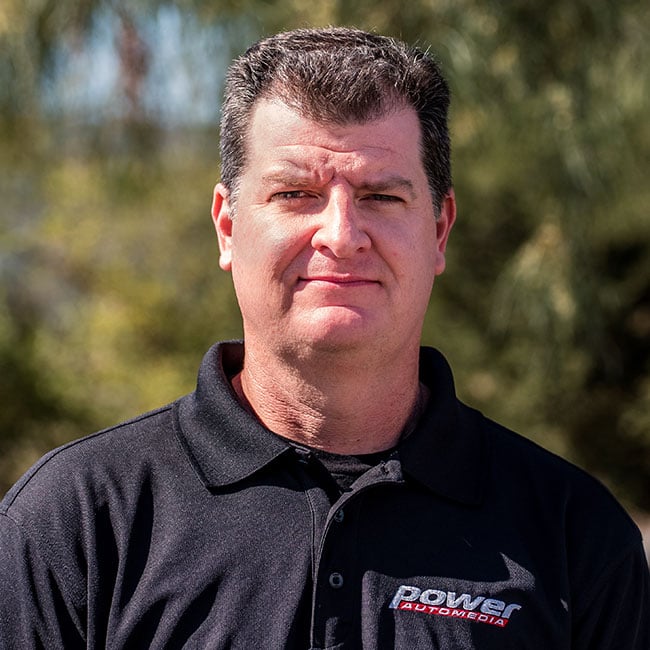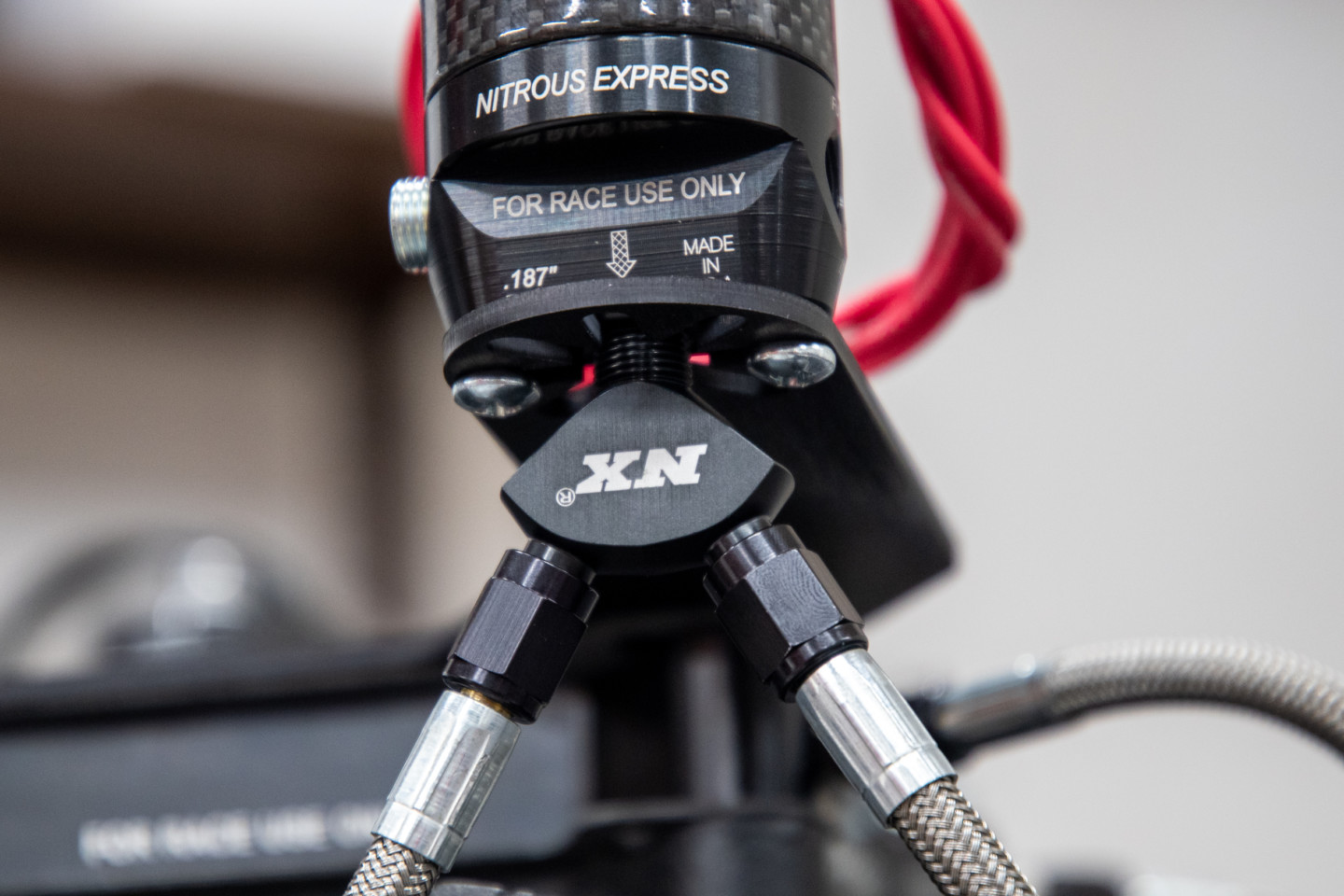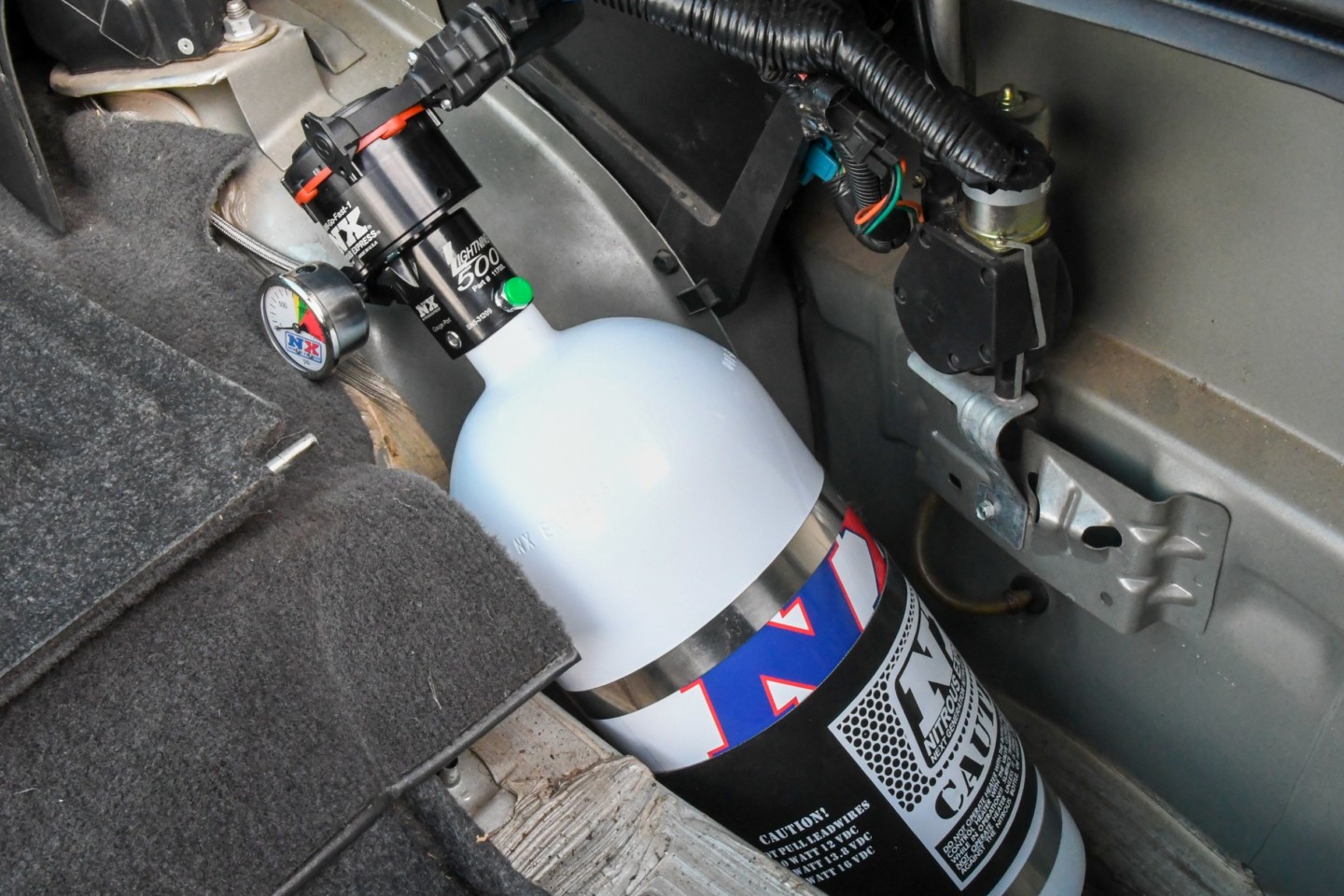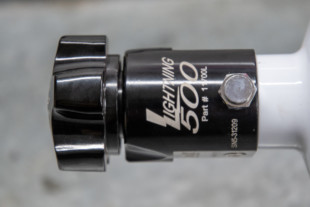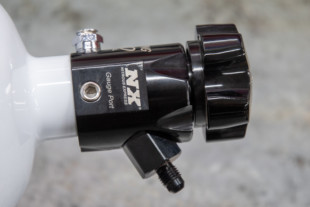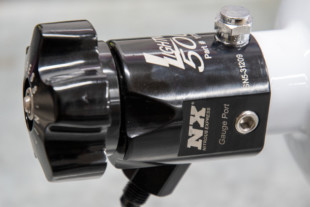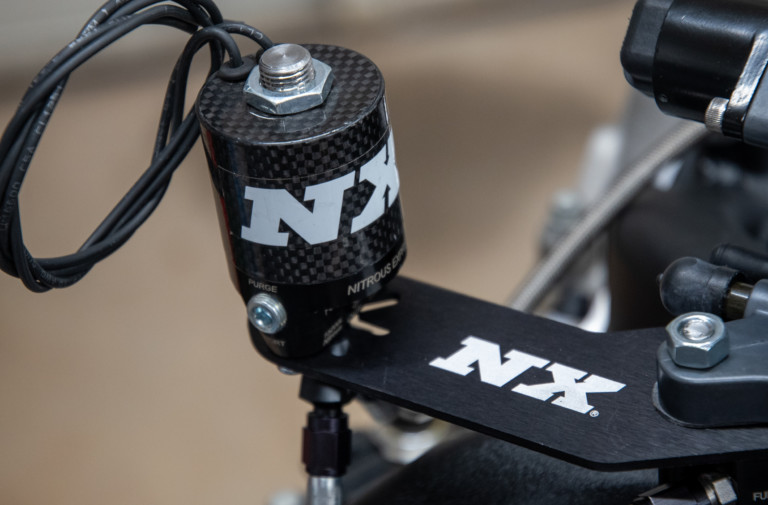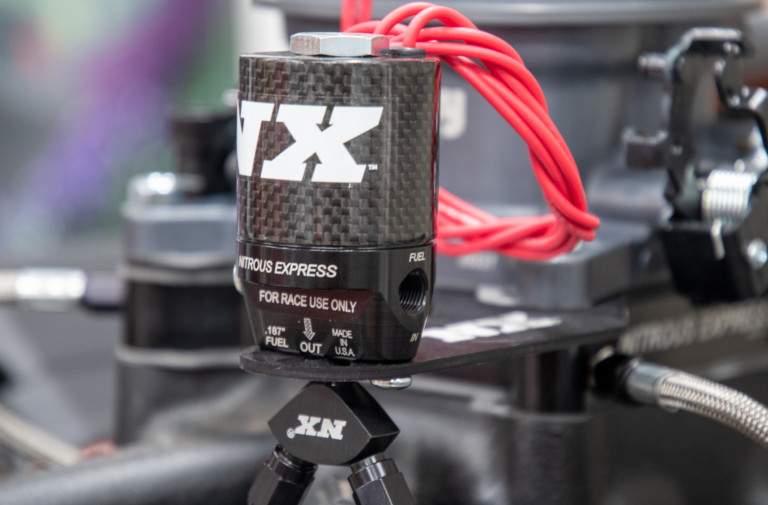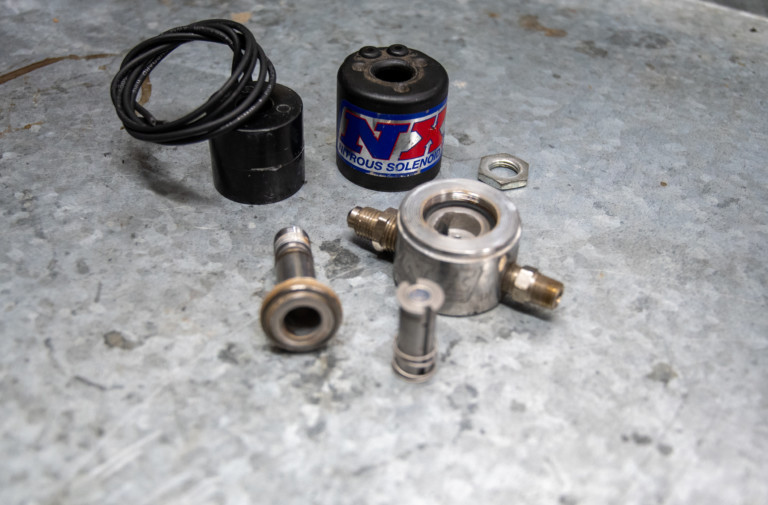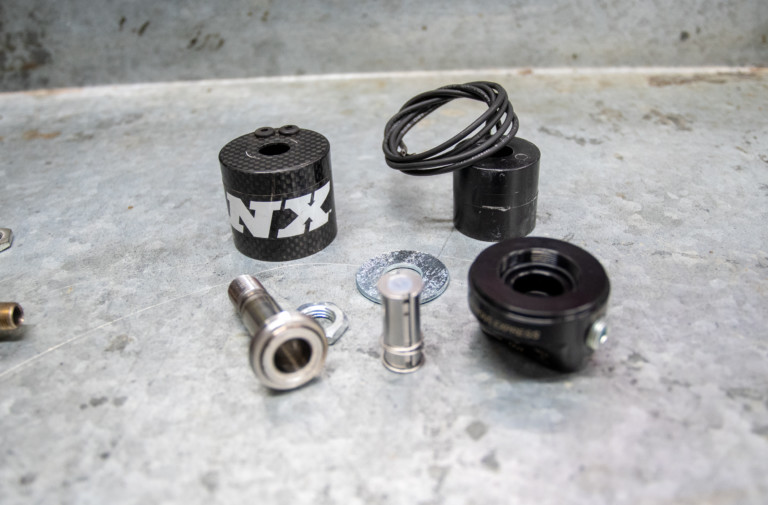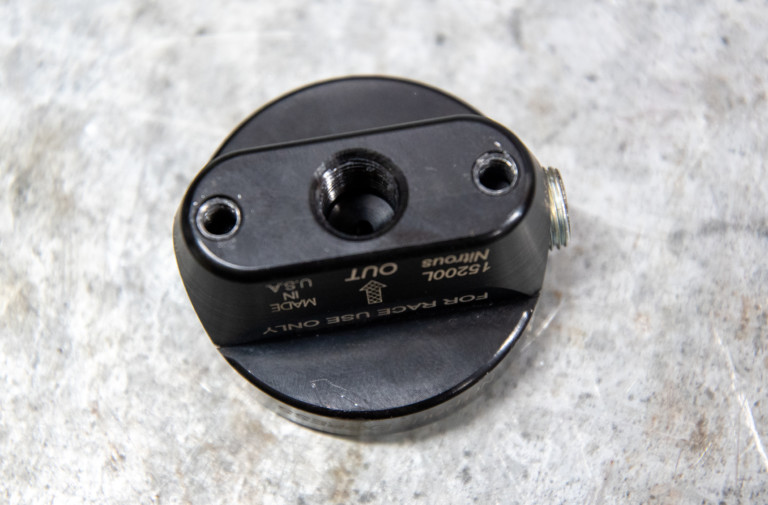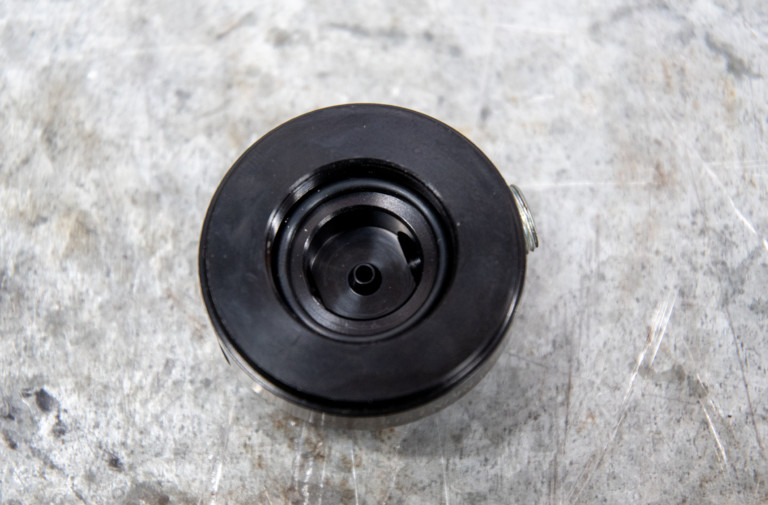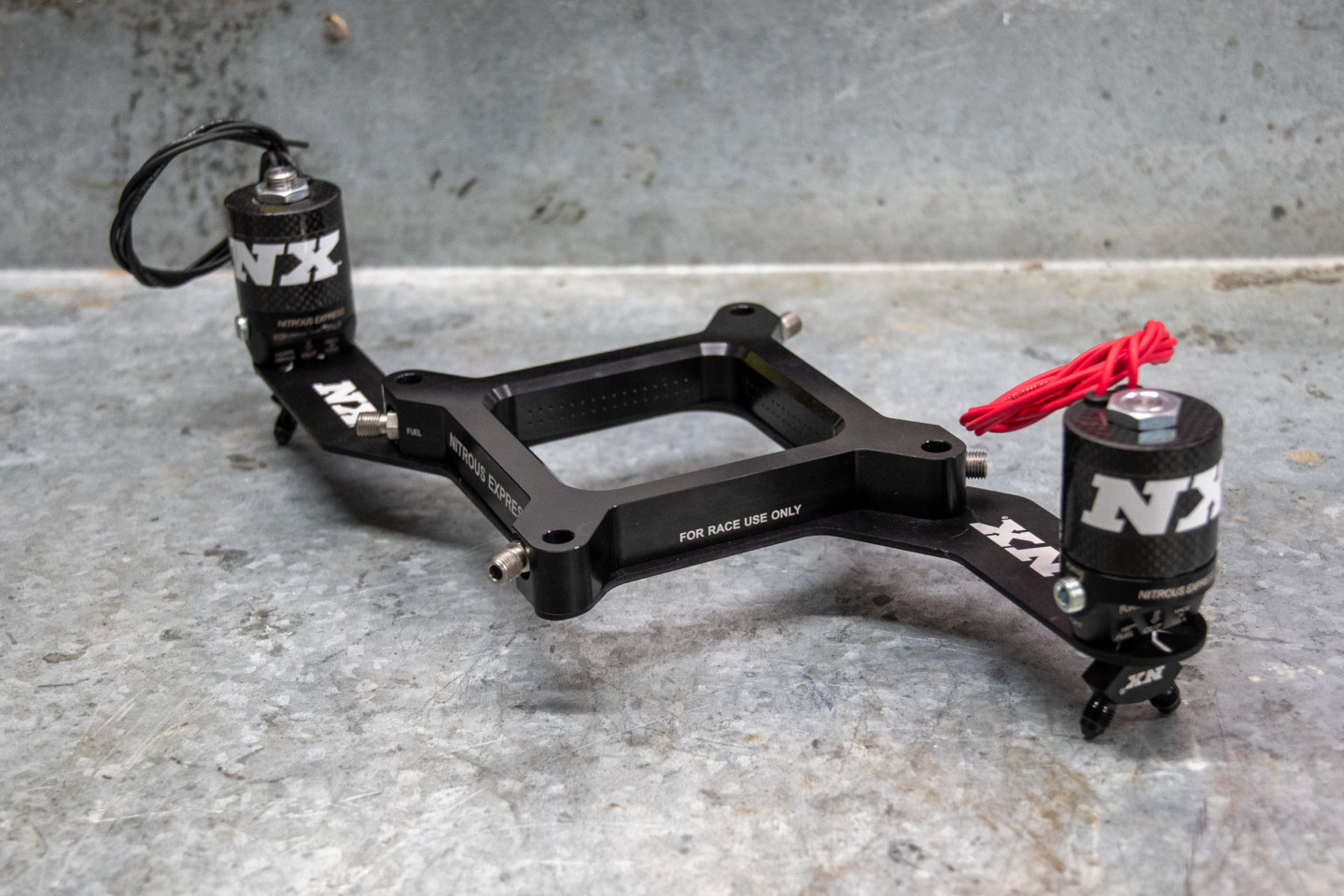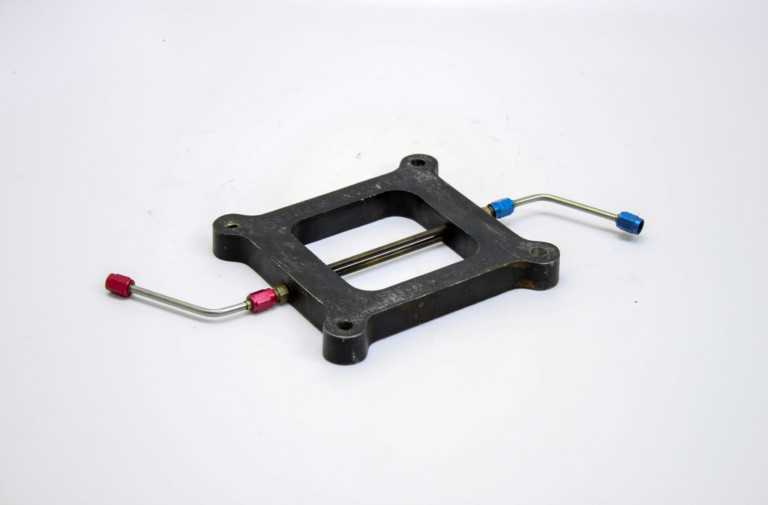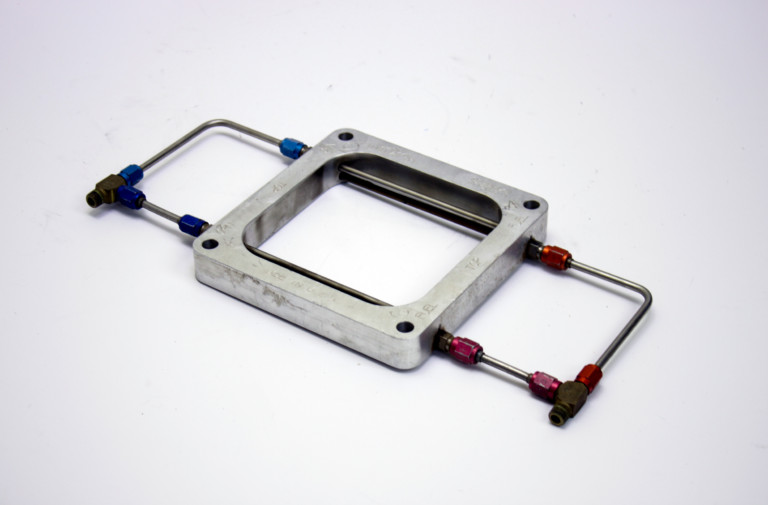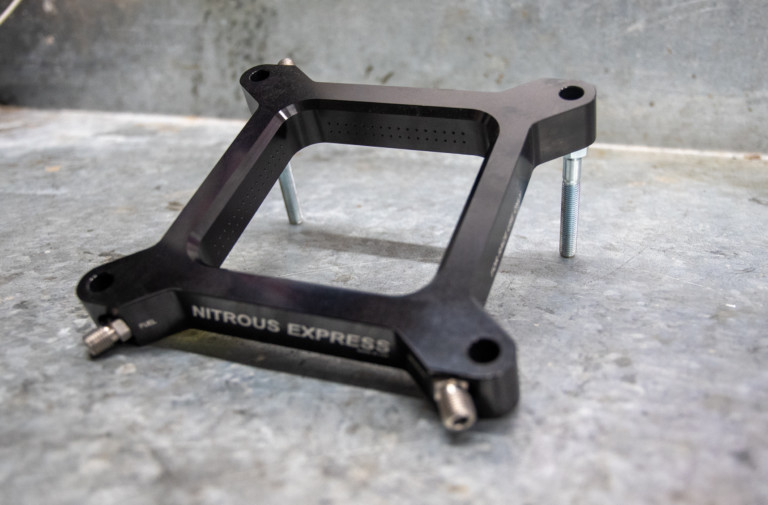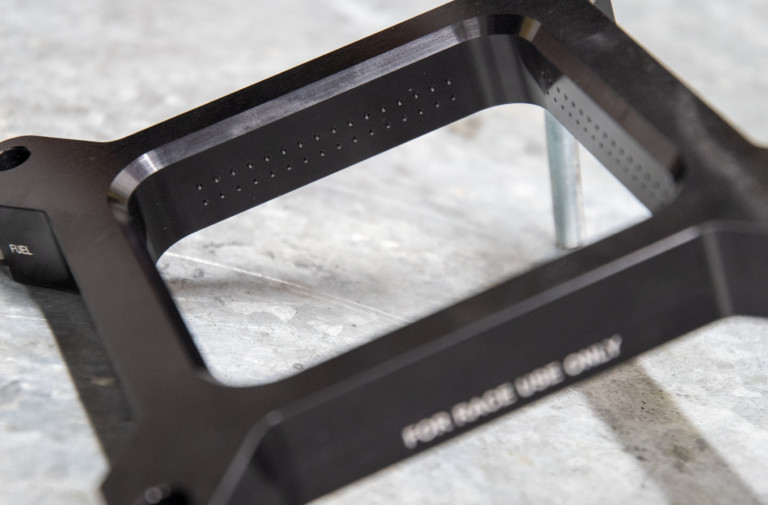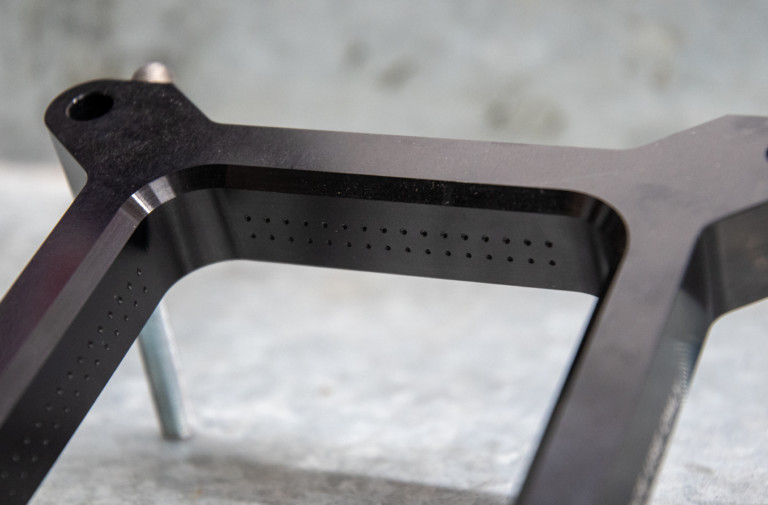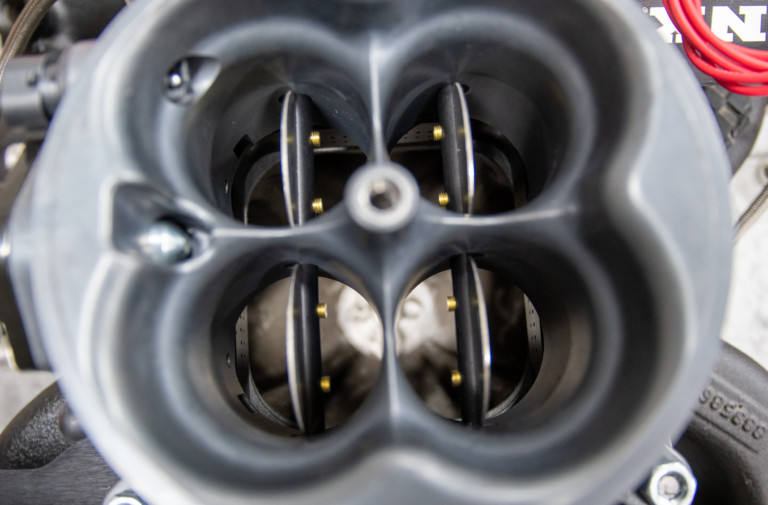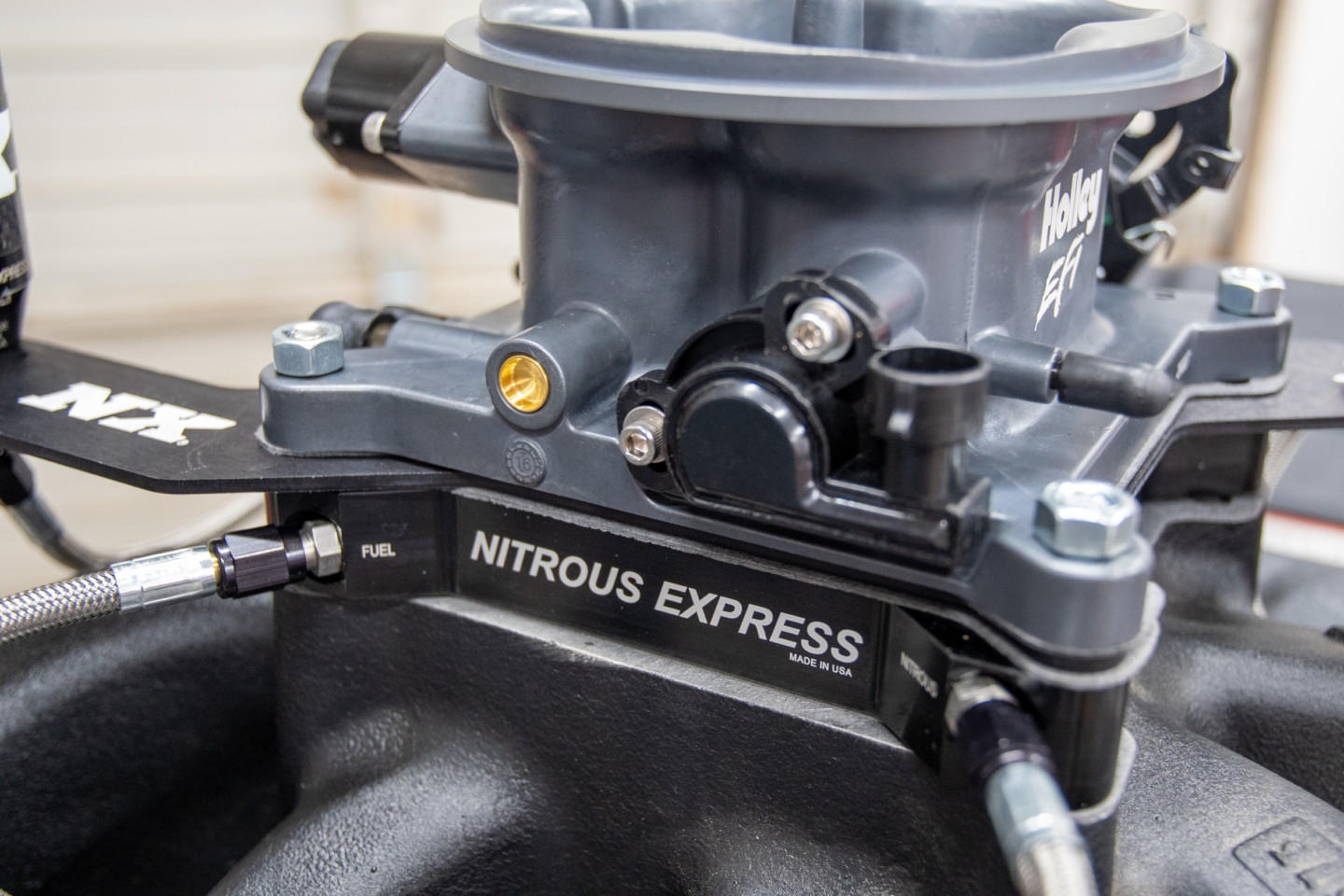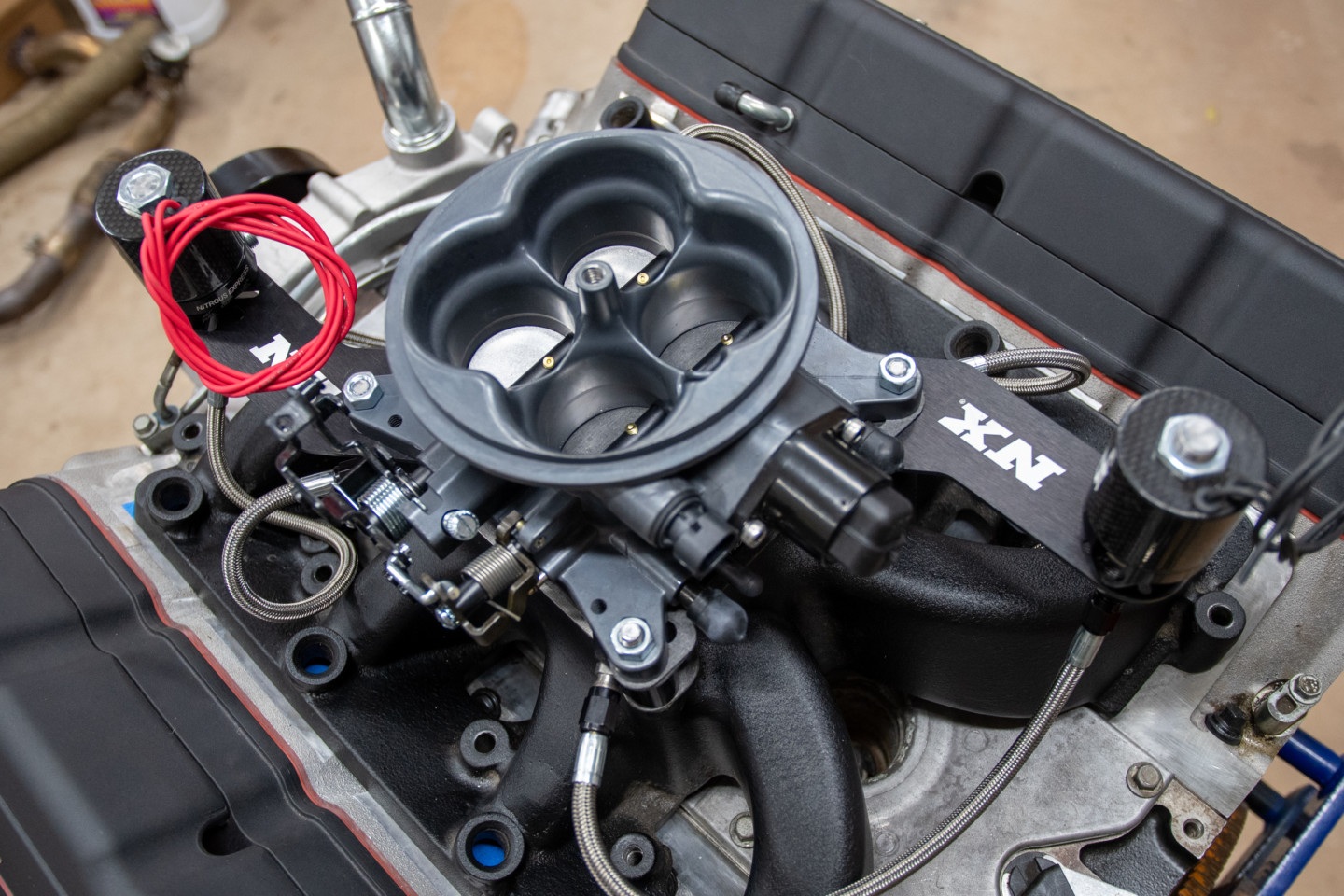I’ve played with my fair share of nitrous systems over the years, and I’m willing to bet I know more than the average Joe. In fact, way back in the day, around 1996, I was daily-driving a 1967 Chevrolet Camaro with a 468 cubic-inch big-block engine mated to a TH400. The car was relatively quick due to the gobs of torque it produced, but I was looking for a little more. After some research, while reading every magazine I could get my hands on, I decided nitrous was in my future.
I grabbed the Summit Racing catalog and ordered a 4150 flange nitrous plate system. After the package arrived, I decided I should probably have someone else install it since I had zero experience. After searching around town, I was recommended to a gentleman by the name of Mike Wood, owner of Nitrous Express (NX). I loaded up the system and made my way to Wood’s shop to discuss the nitrous installation. I’m still not exactly sure what happened, but somehow I left there with another nitrous system. Wood sold me one of his systems and gave me enough confidence to handle the installation.
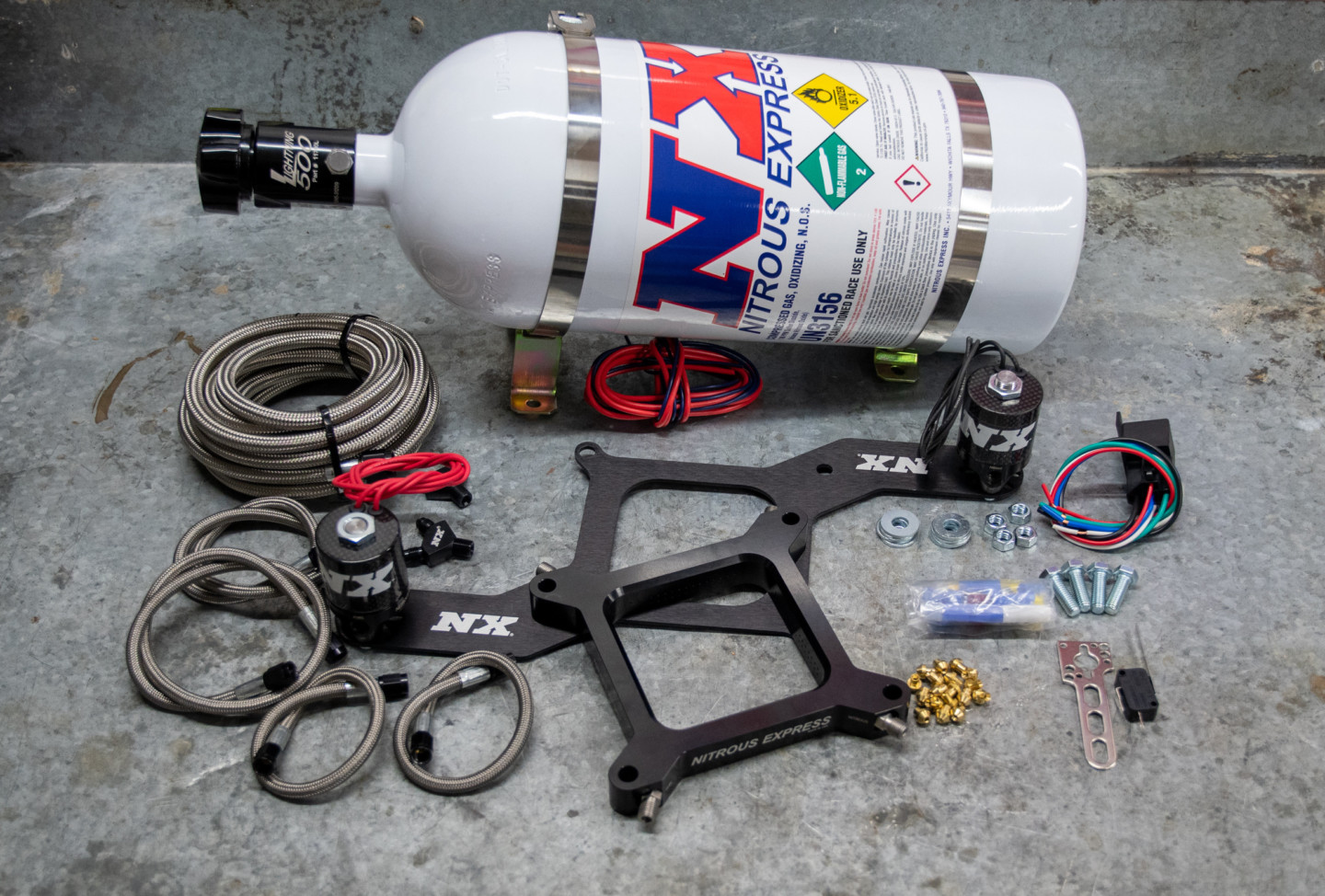
Nitrous systems certainly didn’t look like this back in the 1990s. The Nitrous Express Assassin plate system offers the latest in high-tech design and efficiency.
Fast forward almost 25 years, and wouldn’t you know it…we’re still playing with nitrous oxide and spraying just about everything we can. So, what’s changed in the nitrous industry over the past 25 years?
A lot.
How Nitrous Works
An engine needs oxygen and fuel to make power. Nitrous Oxide is a powerful oxidizer when introduced to elevated temperatures like those in a combustion chamber. When these atoms are split in the cylinders, the two nitrogen atoms act like a buffer, giving you more control than if you just tried to run pure oxygen, which is a terrible idea. The oxygen is then free, bringing more air to the engine. The trick is to get the correct volume of nitrous and fuel in the engine to make safe, reliable power. Too much fuel and the system will run rich and surge while not making the intended horsepower. Not enough fuel will cause a lean condition, resulting in a backfire and engine damage. Luckily, nitrous manufacturers have this all worked out with formulas and flowbench work, so the customer knows what jets to run for specific fuels and horsepower levels.
Nitrous Kit Components
All nitrous systems utilize similar components to get the compressed N2O in the engine. The largest and most iconic piece of a system is the cylinder or nitrous bottle. This is where the liquid nitrous is stored. These bottles have a valve on them that connects to a feed line, which runs the length of the vehicle and attaches to a nitrous solenoid. While a dry system only has one nitrous solenoid, a wet system will have two — one for nitrous and another for fuel. However, this topic is one that gets debated often and is one for another day. The lines from the solenoids will then attach to a nozzle or plate, depending on the system type, to inject the mixture in an engine.
Bottles And Valves
Surprisingly, nitrous bottles have not changed much over the years. But, the bottle valves have considerably. Back in the ‘90s and earlier, finding a standard brass valve that would be modified was not uncommon. Some companies would add ports for gauges and other modifications for better flow.
Today’s bottle valves are billet aluminum works of art and are built explicitly per the manufacturer’s request for better flow. NX’s Lightning 500 bottle valve is a fantastic example of a product that evolved from the old brass valve. The Lightning 500 has a .625-inch siphon tube, only one 45-degree turn in the nitrous flow path, and fittings that will allow the use of up to a 10AN supply line with no restrictions. NX even went so far to design a bottle nipple that allows the liquid nitrous to transition seamlessly to the feed line.
Ryan Lewis, Marketing Manager for Nitrous Express, said, “NX has spent countless hours on the flow bench eliminating these turbulence points in its systems to minimize the boiling of the nitrous charge.” Boiling takes place when the nitrous hits an expansion and then converts from a liquid to a gas. This turbulence slows down the flow, decreasing the amount of nitrous that can be utilized during a pass. Lewis continued, “The Lightning 500 valve produces more horsepower and is easier to tune than other valves.”
Solenoids
Solenoids are nothing more than an electronic valve. When you apply 12-volts and ground, a coil is energized, lifting a piston, allowing nitrous or fuel to flow into the engine. While it’s a pretty simple concept, when compared to solenoids of the past, you will notice that the NX Lightning series solenoids look very different. While they appear more modern, these changes also serve a purpose.
The Lightning Series solenoids feature a CNC aluminum body topped with carbon-fiber cans for the ultimate weight savings. NX also uses high-quality components in the solenoids that are made in the USA.
According to Lewis, “NX Lightning solenoids feature an improved flow path that allows nitrous/fuel to enter above the seat and exit from the bottom for flow unmatched by any other solenoid on the market. Our Lightning nitrous solenoids feature an integrated purge port which allows you to connect a purge solenoid directly to the nitrous solenoid. Purging through the body of the solenoid eliminates the air pocket between the purge valve and the solenoid orifice.”
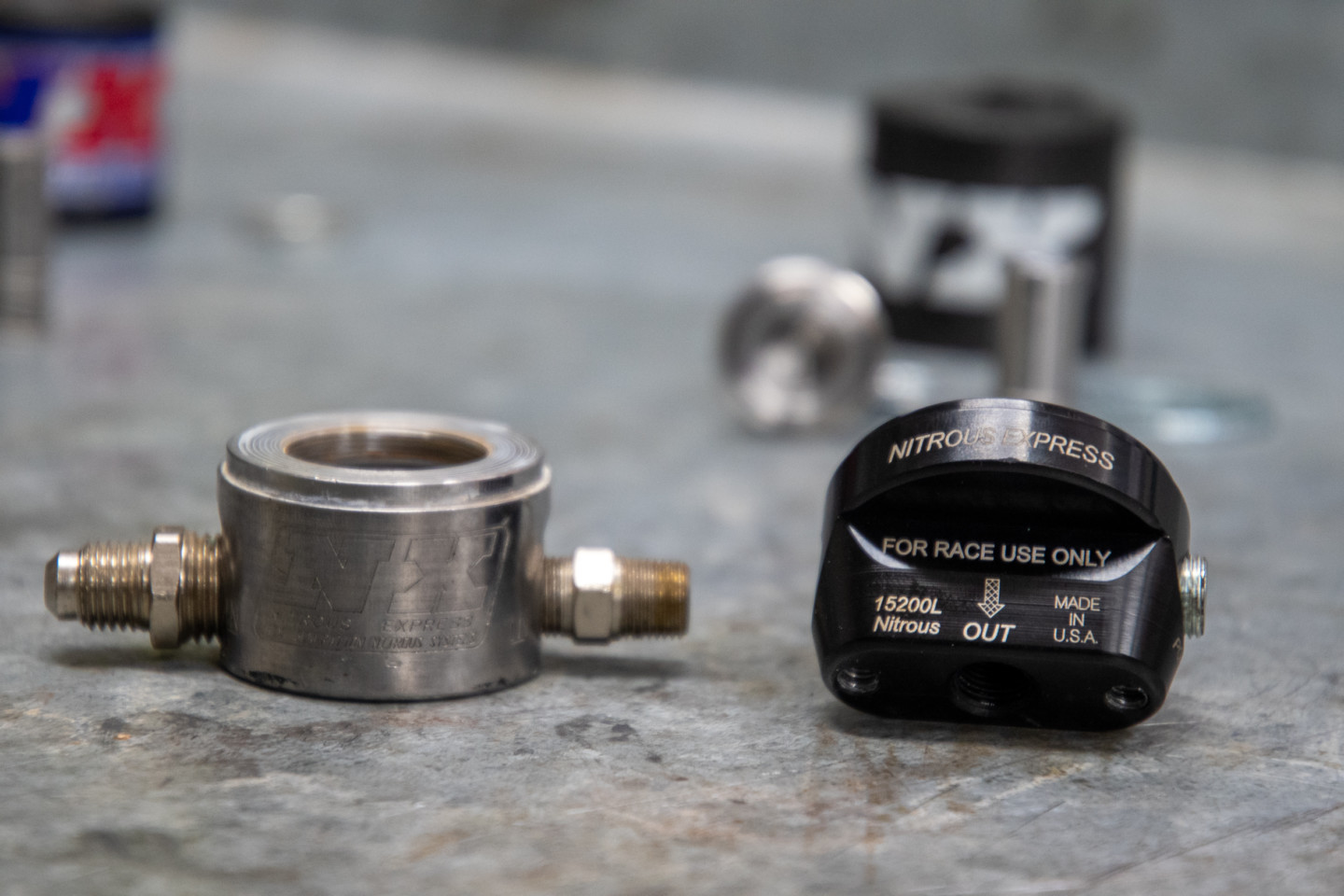
Here you can see the differences between the older NX solenoid base and the new lightning base. The new base is lighter and flows much better than the designs of the past.
Like the nitrous solenoids, the fuel solenoids have changed with the times, as well. Lewis explains, “The Lightning fuel solenoids feature a fuel bypass port that allows you to connect a small return line to the tank. This eliminates trapped air between the fuel pressure regulator and the fuel solenoid, eliminating the lean spike associated with older solenoids.”
Plate Design Through The Ages
NX’s latest plate design is called the Assassin, and it’s a stark contrast when compared to the nitrous plate I purchased back in 1996. The original NX plate was a cast aluminum part that was drilled and tapped for spray bars. Employees would then take brass tubes and strategically drill them by hand before gluing them into the plate fittings. The spray bars were then screwed into the nitrous plate and secured with Loctite.
While this type of conventional nitrous plate worked well, especially back in the day, it had a few problems. First, building the plates was extremely labor-intensive…it could take a couple of days for someone to create a handful of these units. Another problem was, if a customer didn’t back the fittings up when tightening the feed lines, the brass tubes could rotate, causing lousy distribution. These tubes would also impede airflow coming into the engine. Finally, brass tubes are often brittle and prone to cracking. If an engine backfired, it could break the tubes and interfere with the distribution of the plates.
The Nitrous Express Stage 5 conventional nitrous plate on the left was the first 4150-series released by NX in 1996. This plate featured brass tubes and a cast aluminum plate. Over the years, the company developed new products like the Gemini Twin on the right. The Gemini plate offered stainless steel spray bars and a billet aluminum plate.
The Assassin plate system doesn’t have any of these problems. NX removed the spray bars and now uses the perimeter of the plate for distribution. This design eliminates every single obstacle that the conventual plate system has. Lewis said, “The open plenum design ensures there is no restriction in the air path or plenum area under the carburetor/throttle body. So, customers with big single blades on their throttle bodies or carburetors now have a high-flow plate option.”
The NX Assassin nitrous plate is a work of art. Unlike previous designs, this plate eliminates spray bars and offers a unique perimeter spray pattern that ensures precise nitrous-fuel distribution. It's available with a 4150 or 4500 flange and can be jetted from 50-300 or 100-500 horsepower depending on the choice system.
Building A Better Product
So what’s allowed nitrous companies to improve their products over the years? Technology.
“The invention of a flow bench, data loggers, 3D printers, and high-tech CNC machines are excellent examples of why we can do more now than we ever could in the past. We can go from a product idea to test fitting products on the same day now. Ten years ago, this process would have taken weeks to accomplish,” Lewis says.
NX used all of its resources when it came time to design the new Assassin plate system.
“CNC Machines allow nitrous plates to be machined from one piece, with passages made into the plates. This results in more durable and higher-flowing plates. We can now machine hard turns and flow-restricting passages out of the plate to maximize flow potential. Then we can take a look at the results from these modifications on our flow bench with data loggers,” says Lewis.
The Future Of Nitrous
There is little doubt that nitrous will continue to evolve with new and improved methods becoming available. What was once an innovative product used on WWI airplanes has become a viable power adder for the ages. Nitrous will always have its place, whether on a street car or racecar, and companies like Nitrous Express will take full advantage of new technology and apply it to its products so NX customers can go faster and win more races.
